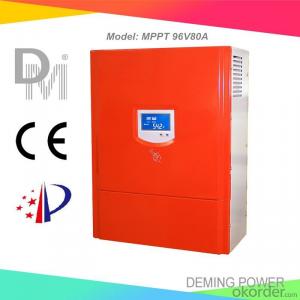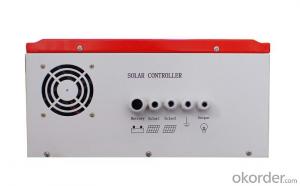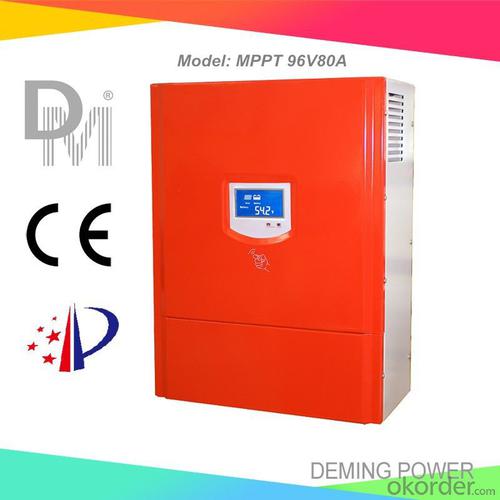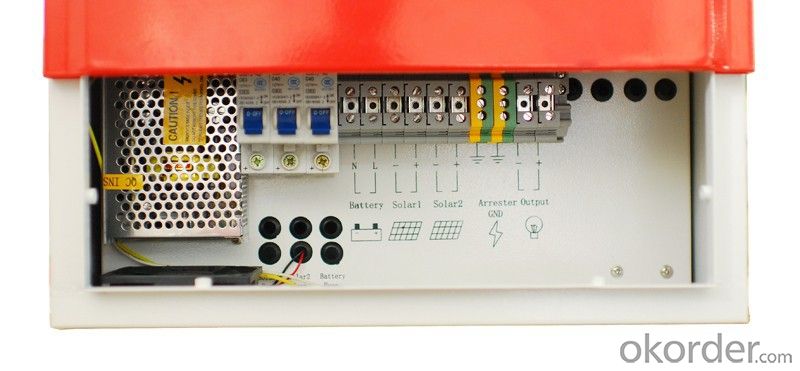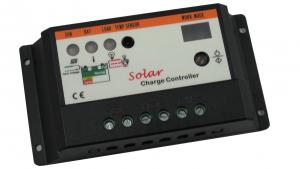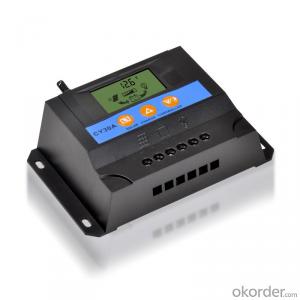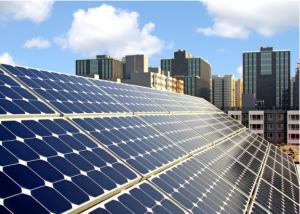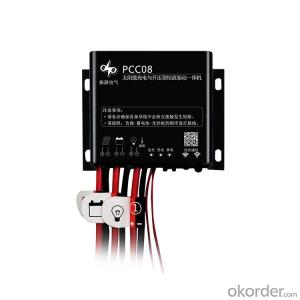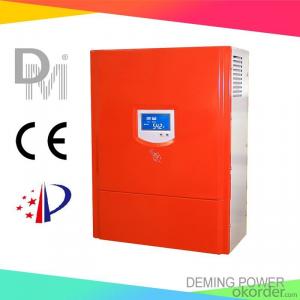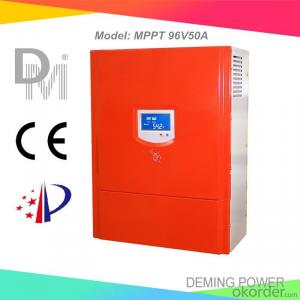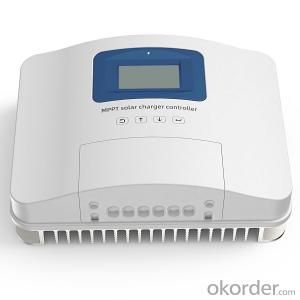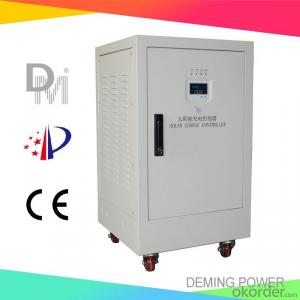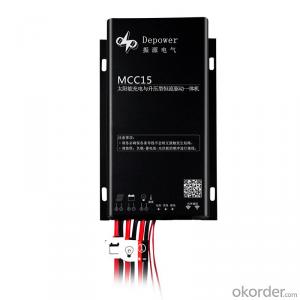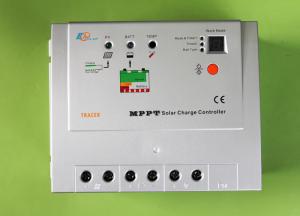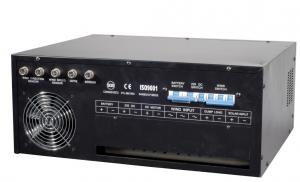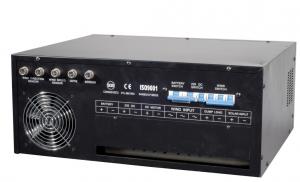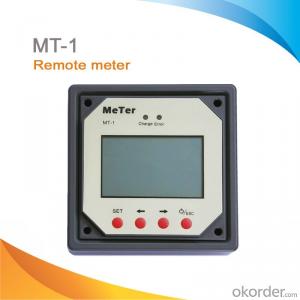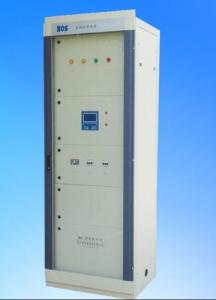10A MPPT Solar Charge Controller 96V 80A for Solar Power System
- Loading Port:
- Qingdao
- Payment Terms:
- TT OR LC
- Min Order Qty:
- 1 PCS
- Supply Capability:
- 1000 PCS/month
OKorder Service Pledge
OKorder Financial Service
You Might Also Like
Properties of the solar charge controller
1. Design for off-grid solar power system.
2. Applicable to different kinds of batteries.
3. Adopts MPPT technology (Maximum Power Point Tracking). The advanced tracking algorithm make the solar module operate at ideal voltage which the solar modules can produce the maximum available power.
4. Modular design with simple structure and easy maintenance.
5. Automatic power control function.
6. LCD display: Solar panel current, solar panel voltage, solar panel power, battery group voltage, charge current.
7. Perfect protection function: Solar reverse charge protection, Solar reverse connection protection, Battery reverse connection protection, Battery overcharge protection, Battery over current protection etc ,thus the system has higher reliability.
Technical parameters of the solar charge controller
Model | 96V80A | |||||
Battery group rated voltage | 96Vdc | |||||
PV Rated current | 80A | |||||
PV open circuit voltage | 400V | |||||
PV Max. power | 7680Wp | |||||
Input PV module road number | 1 | |||||
Function | MPPT charge mode, auto stop charge, auto recharge voltage; Protection: connecting contrary, over current, short circuit, over heat etc. | |||||
Display mode | LCD | |||||
Display content | solar panel voltage, solar panel current, solar panel power, battery voltage, charge current | |||||
MPPT DC voltage range | 80-116Vdc | |||||
Floating Charge Voltage (adjustable) | 110Vdc | |||||
Stop charge voltage | 116Vdc±1% | |||||
Recharge voltage | 108V±1% | |||||
Voltage drop between PV and battery | 1.5V | |||||
Max itself power consumption | 100mA-150mA | |||||
Work environment temperature | -30-60°C | |||||
Relative humidity | 90% No condensation | |||||
Applicable altitude | 3000m The rated power should be reduced when it is higher than 2000m | |||||
Noise (1m) | 40dB | |||||
Degree of protection | IP20(Indoor) | |||||
Cooling method | Forced air cooling | |||||
*Communication interface (optional) | RS485/USB/GPRS/Ethernet | |||||
*Temperature compensation(optional) | -4mv/°C/2V,-35°C~+80°C,Accuracy:±1°C | |||||
Product size (mm) | 480*370*160mm | |||||
Product Weight(kg) | 12kg | |||||
*Above parameter only for reference. Could be custom made to user specifications.
- Q: What is the maximum cable size that can be used between the solar panels and the solar controller?
- Various factors, such as the distance between the solar panels and the solar controller, the current capacity of the panels, and the limitations on voltage drop, influence the maximum cable size that can be used. It is generally recommended to use larger cable sizes to minimize voltage drop and ensure efficient power transmission. To determine the maximum cable size, one must consider the cable's current carrying capacity and the voltage drop over the distance. The manufacturer typically defines the current carrying capacity, which can be found in the cable specifications. It is crucial to select a cable capable of handling the maximum current generated by the solar panels. Voltage drop is another crucial factor to consider. It occurs due to the cable's resistance and can impact the overall performance and efficiency of the solar system. The acceptable voltage drop varies depending on the system's requirements, but a general guideline is to keep it below 3% for optimal performance. To calculate the maximum cable size, one can use the voltage drop formula and the cable's current capacity. By considering the distance between the panels and the controller, the current generated by the panels, and the acceptable voltage drop, one can determine the appropriate cable size. For specific solar panels and controllers, it is advisable to consult with a professional or refer to the manufacturer's guidelines. They can provide accurate recommendations based on the system's requirements and ensure the optimal cable size is chosen for maximum performance and safety.
- Q: Can a solar controller be used with a solar-powered spa or wellness center?
- Yes, a solar controller can be used with a solar-powered spa or wellness center. A solar controller helps regulate and optimize the charging and discharging of batteries in a solar system, ensuring the efficient use of solar energy. It can be used to monitor and control the solar panels, battery banks, and other components of a solar-powered system in a spa or wellness center, providing reliable and sustainable power for various equipment and facilities.
- Q: Can a solar controller be used in a solar-powered satellite system?
- Yes, a solar controller can be used in a solar-powered satellite system. The solar controller helps regulate and optimize the charging and discharging of the satellite's batteries, ensuring efficient use of the solar power generated by the satellite's solar panels. It protects the batteries from overcharging and helps maximize the lifespan of the batteries in the satellite system.
- Q: Can a solar controller be used in a solar-powered electric train system?
- Yes, a solar controller can be used in a solar-powered electric train system. A solar controller is responsible for regulating and controlling the flow of electricity between the solar panels and the batteries. In a solar-powered electric train system, the solar controller would ensure that the energy generated by the solar panels is efficiently stored and used to power the train's electric motors.
- Q: Can a solar controller be used in extreme weather conditions (high winds, heavy rain, etc.)?
- Yes, solar controllers are designed to withstand extreme weather conditions such as high winds and heavy rain. They are typically built with sturdy and waterproof materials to ensure durability and protection from outdoor elements. However, it is always recommended to check the specific specifications and guidelines provided by the manufacturer to ensure proper functioning and longevity of the solar controller in such conditions.
- Q: Can a solar controller be used with solar panels of different forms?
- Solar panels of different forms can indeed be used with a solar controller. The purpose of a solar controller is to regulate the charging process of a solar panel system and safeguard the batteries against overcharging or overdischarging. It is compatible with various types of solar panels, such as monocrystalline, polycrystalline, and thin-film panels. The principal function of the controller is to align the voltage and current output of the solar panels with the requirements of the batteries. Consequently, as long as the solar panels fall within the voltage and current range supported by the solar controller, they can be utilized together, irrespective of their form or type.
- Q: Can a solar controller be used with solar panel tracking systems?
- Yes, a solar controller can be used with solar panel tracking systems. The solar controller is responsible for regulating the charging and discharging of the battery in a solar system. It ensures that the battery is charged efficiently and prevents overcharging or over-discharging. When used with solar panel tracking systems, the solar controller will continue to monitor and regulate the battery charging process, irrespective of the movement of the solar panels.
- Q: Can a solar controller be used with both lead-acid and AGM batteries?
- Yes, a solar controller can be used with both lead-acid and AGM batteries. The controller's charging algorithm can be adjusted to match the specific requirements of each battery type, ensuring proper charging and maintenance for both types of batteries.
- Q: How does a solar controller handle voltage drops in the wiring system?
- Various techniques are employed by a solar controller to handle voltage drops in the wiring system. One of the key functions of a solar controller is to regulate and optimize the charging process of the solar panels to the batteries. When a voltage drop occurs in the wiring system, the solar controller constantly monitors the battery voltage and adjusts the charge current accordingly. It compensates for the voltage drop by increasing the charge current to maintain the necessary charging voltage at the battery terminals. This guarantees that the battery receives the required charge despite the voltage drop. Additionally, solar controllers often include a charge compensation mechanism that takes into account the voltage drops caused by high resistance or long wire runs. This compensation can be achieved through techniques like pulse width modulation (PWM) or maximum power point tracking (MPPT). PWM controllers rapidly switch the connection between the solar panels and the batteries to adjust the charging current. This helps to maintain a consistent charge voltage even in the presence of voltage drops in the wiring system. On the other hand, MPPT controllers optimize the charge current by dynamically tracking the maximum power point of the solar panels, ensuring efficient charging regardless of voltage drops. In summary, a solar controller effectively handles voltage drops in the wiring system by monitoring the battery voltage, adjusting the charge current, and employing compensation techniques such as PWM or MPPT. These features guarantee that the batteries receive the necessary charge, even in the presence of voltage drops in the wiring system.
- Q: Can a solar controller be used with solar panel window mounts?
- Yes, a solar controller can be used with solar panel window mounts. A solar controller regulates the charging and discharging of the batteries connected to the solar panels. It is compatible with different mounting options, including window mounts, as long as the solar panels are properly connected to the controller.
Send your message to us
10A MPPT Solar Charge Controller 96V 80A for Solar Power System
- Loading Port:
- Qingdao
- Payment Terms:
- TT OR LC
- Min Order Qty:
- 1 PCS
- Supply Capability:
- 1000 PCS/month
OKorder Service Pledge
OKorder Financial Service
Similar products
Hot products
Hot Searches
Related keywords
